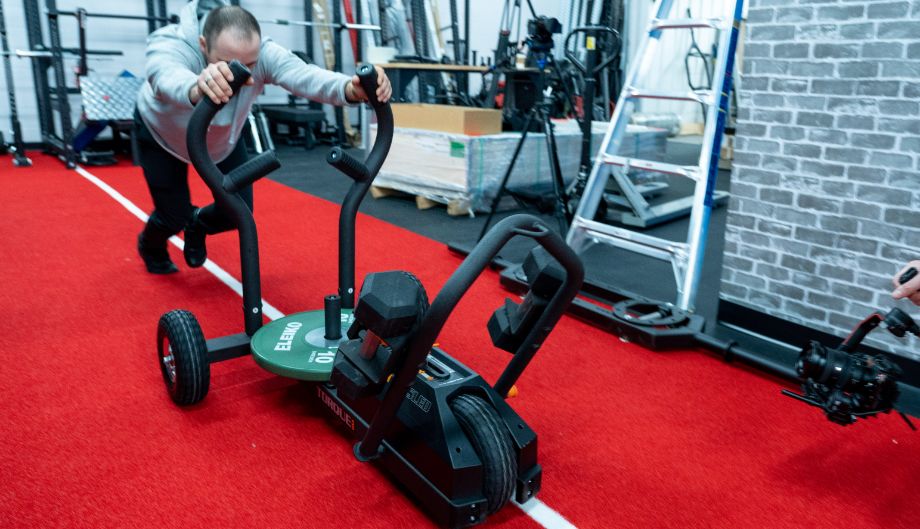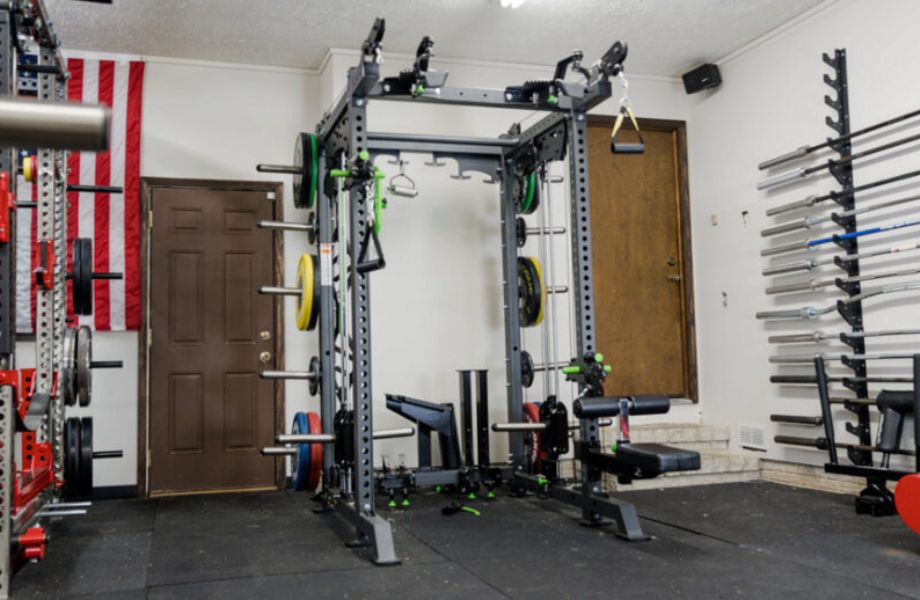When it comes to exercise, there are training methods that some lifters stand by, and some…not so much. High-intensity interval training (HIIT) is one example, superset workouts are another, and time under tension workouts—the focus of this guide—certainly have their supporters and critics, too.
I believe that you shouldn’t knock anything until you try it. I’ve been training for over 10 years and can safely say that what works for you today might not work in a year or two. I’ve used time under tension workouts myself and with my clients to help reach fitness goals faster, reset form on certain exercises, and add variety to workouts.
I’ll begin this guide by explaining time under tension (aka TUT) before giving you five ways to incorporate TUT into your training. Next, I’ll go through a sample full-body workout you can use to try it out before describing the benefits. By the end, I can assure you of the ability to decide whether TUT is for you.
Let’s build tension!
What Is Time Under Tension?
Time under tension is the total time you hold a muscle (or a group of muscles) during a set. Let’s say you do a set of dumbbell bench presses for eight reps, for example, and it takes you 20 seconds. Your chest, triceps, and anterior deltoids are under tension for 20 seconds.
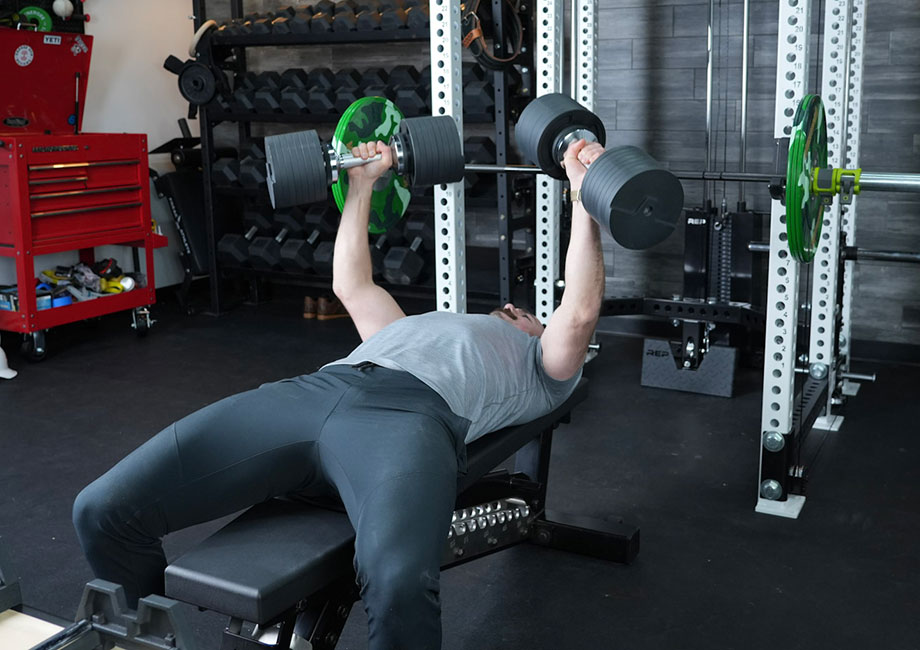
There are several ways to increase your muscles’ time under tension. Usually, when people refer to time under tension workouts, they increase the length of their sets. You’ll learn how to do this below (and the benefits of doing so), but for now, it’s important to know that the 20 seconds you took for your set of chest presses won’t be 20 anymore—it’ll be more.
Is Time Under Tension Effective?
Before I show you how to incorporate time under tension into your training, let’s examine its effectiveness. A 2012 Journal of Physiology1 study found that “the time the muscle is under tension during exercise may be important in optimizing muscle growth.” This is because a slow lifting movement increases muscle fatigue and muscle protein synthesis.
RELATED: How To Build Muscle
A 2001 Journal of Sports Medicine and Physical Fitness2 study compared regular and slow-speed resistance training on muscle strength. It found that slowing down your reps (you’ll see more on this below) can be an “effective method for middle-aged and older adults to increase strength.”
Sounds great, right? Well, I’m sorry to say that both studies have their limitations. In the first study by the Journal of Physiology1, participants performed the exercise at 30% of their one-repetition maximum strength. The second study used middle-aged and older adults to come to their conclusions. Therefore, the evidence to support time under tension is somewhat limited.
Critics of time under tension workouts would argue that instead of increasing the length of your sets, you should increase the load and focus on progressive overload. If you’re new to training, I’d be inclined to agree. However, if you’re an experienced lifter and want to add variety to your training or try a different way to reach your fitness goals, I’d say that TUT is worth a try.
How Can You Incorporate Time Under Tension Into Your Training?
Here are five ways to incorporate time under tension into your training:
Slow Down Your Reps
You can either slow down the eccentric phase of your repetition (which is where you lower the weight), or you can slow down both the eccentric and concentric phases. These are known as tempo reps, and doing any resistance exercise this way will increase your time under tension. It’s worth noting that you may need slightly lighter weights to be able to do this.
RELATED: Expert Guide To Concentric vs Eccentric Training
You’ll often see tempo repetitions in a four-digit notation (for example, 3-1-3-0). This means that you should take three seconds for the eccentric phase, pause for one second at the bottom, lift the weight back up for three seconds, and then pause for zero seconds at the top of the movement.
RELATED: How and Why To Do Tempo Training
Do the Full Range Of Motion
Time and time again, I see lifters not going the full range of motion with their reps. If this sounds like you, you might miss out on potential strength gains or muscle growth. Also, doing the complete repetition increases your time under tension. Likewise, some strength training exercises allow you to stand on a weight plate or elevated surface (for example, deficit Romanian deadlifts) to help increase your TUT.
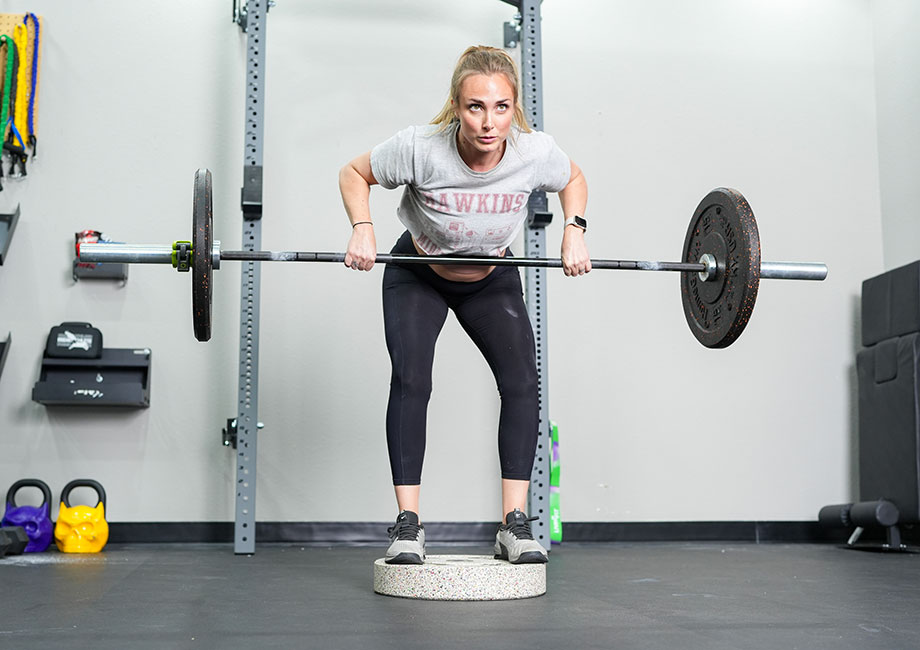
Consider Isometric Repetitions
Isometric reps—aka pause reps—differ slightly from tempo reps in that you go up and down at regular speed. However, you hold the rep for a longer time. For example, with pull-ups or weighted pull-ups, you’ll hold the top position (once your chin clears the bar) for a few seconds before lowering yourself down.
Increase Your Training Volume
Another way to incorporate time under tension is to increase the number of reps or sets you do. Let’s say you’re doing eight reps of each set for muscle hypertrophy. Increasing this to 12 reps still means you’re still in the correct rep range to build muscle, but each set will last longer, and you’ll increase your muscles’ time under tension.
Add Drop Sets
Drop set workouts are when you do a set, drop the weight or change the mechanics, and immediately do another set. This saves time, adds variety to your training program, and increases TUT because each set lasts longer. It’s also worth noting that drop sets are best suited for isolation exercises because it’s easier to change the weight (by the time you change the weight on a barbell, it’s not a drop set).
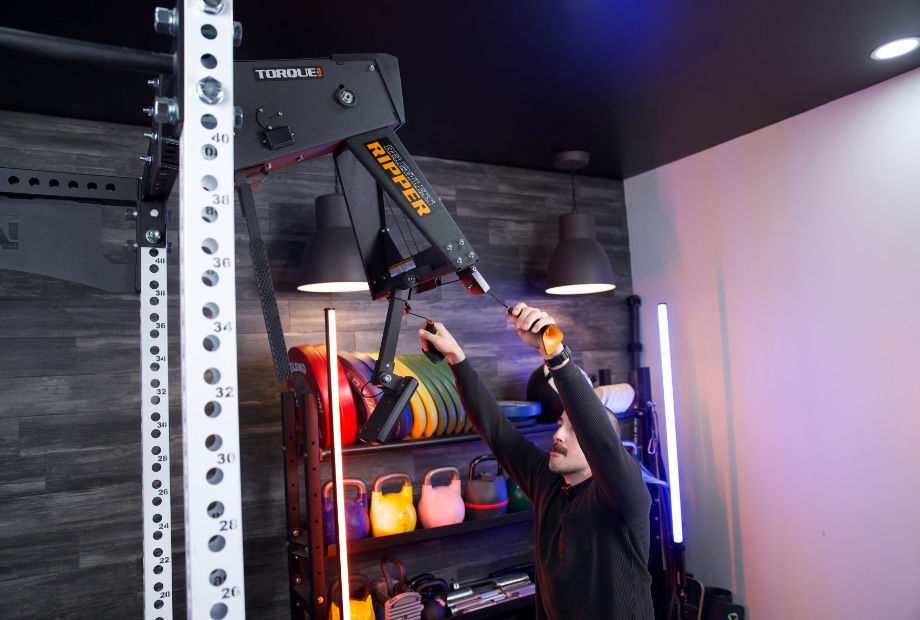
Sample Time Under Tension Workout
So, you like the sound of time under tension training and want to learn more. Here’s a full-body time under tension workout that I would recommend to my clients as a certified personal trainer (CPT):
| Exercise | Sets | Reps | TUT Modification |
| Barbell Squat | 4 | 6 | Hold the bottom position for 3-4 sec. on each rep. |
| Dumbbell Bench Press | 4 | 8 | Slow down the eccentric phase of the rep, but do the concentric phase as normal. |
| Lat Pulldown | 3 | 10 | Do one set, then change to a close, underhand grip position before immediately doing a second set. |
| Arnold Press | 3 | 10 | Slow down both the eccentric and concentric phases of each rep. |
| Cable Biceps Curl | 2 | 12 | Do one set, drop the weight by roughly 20%, and immediately do the second set. |
| Cable Rope Triceps Extension | 2 | 12 | Do one set, drop the weight by roughly 20%, and immediately do the second set. |
Expert Tips
Before you start this TUT training workout, you’ll want to warm up by doing some light cardio and dynamic exercises (for example, arm circles and swings, leg swings, inchworms, resistance band pull-aparts, push-ups, and more).

If you’re a beginner to resistance training and aren’t comfortable with barbell squats, replace them with goblet squats, leg presses, or leg extensions. After each set, you’ll want to rest for one to two minutes.
What Are the Benefits of Time Under Tension?
Benefits of time under tension include reaching your fitness goals quicker, improving your form, and adding variety to your workouts. See below for more:
Faster Fitness Goals
Whether your fitness goal is to add muscle size, increase your strength, or improve your muscular endurance, time under tension may help. If you think about it, increasing the amount of time your muscles are under tension will recruit more muscle fibers, which may help you to reach your fitness goals quicker, especially if you’re new to TUT training.
Helps You to Focus on Your Form
Most of us—myself included—have been in a place where we add more load to our weightlifting exercises, sometimes to the detriment of proper form. This can lead to injuries. Slowing down your reps or adding a pause helps you to focus on resetting your form and placing more emphasis on the mind-muscle connection3 instead of the load you lift.

Adds Variety To Your Workouts
I’ve been training for over 10 years, and although I love it most of the time, there are times when something needs to change. Adding drop sets, changing the range of motion, and incorporating pauses or different tempos helps to add variety to my bodybuilding workouts. Time under tension differs from the average workout and could be what you need to renew your motivation.
Time Under Tension: Final Thoughts
The jury is out on whether time under tension is an effective workout. Some folks vouch for it, while others don’t see the point in increasing the length of your sets. That said, I see no harm in trying TUT weight training. You might find it helps you to gain muscle mass, focus on your form, and add variety to your workouts.
The five ways to incorporate time under tension into your training include:
- Slowing down your reps
- Performing the full range of motion
- Doing isometric reps
- Increasing your training volume
- Adding drop sets
Until next time, fit fam!
Time Under Tension: FAQs
What is a good time under tension?
A good time under tension depends on your fitness goal. Someone looking to improve muscular endurance will need a different time under tension than someone looking to gain strength or build muscle. As a general rule, you should be increasing time on each set when doing TUT training compared to regular workouts.
For muscular strength, a good time under tension is between 10 and 20 seconds. If your goal is muscle building, you should aim for between 20 and 60 seconds. Anything above 60 seconds is ideal for gains in muscular endurance. It’s worth noting that these are guidelines, and your individual needs may vary.
What’s the difference between time under tension and tempo training?
Time under tension is when you increase the length of your sets compared to regular sets, placing more activation on the muscle (or muscle groups) you’re targeting. You can do this in several ways, including tempo training, performing the full range of motion, doing isometric reps, increasing your training volume, or adding drop sets.
Tempo training is a way to slow down your reps and is often denoted in a four-digit number (for example, 4-1-2-1). The first number refers to the length of the eccentric phase, the second is how long you should pause at the bottom of the movement, the third refers to the length of the concentric phase, and the fourth is the amount of time you should pause at the top of the rep.
Does TUT increase hypertrophy?
A 2012 Journal of Physiology1 study found that TUT may increase hypertrophy. However, studies to support this are limited, so it’s worth trying time under tension yourself to see if it works. If you’re a beginner to resistance training, I would suggest increasing the load you lift rather than TUT until you have more experience lifting.
What is an example of a time under tension exercise?
Technically, you can perform any weightlifting with time under tension. Time under tension refers to slowing down your reps, performing the full range of motion, doing isometric reps, increasing your training volume, or adding drop sets.
With this being said, popular time under tension exercises include:
-Squat
-Pull-up
-Push-up
-Biceps curl
-Triceps extension
-Shoulder press
-Chest press
-Lat pulldown
-Deadlift
References
- Burd NA, Andrews RJ, West DW, Little JP, Cochran AJ, Hector AJ, Cashaback JG, Gibala MJ, Potvin JR, Baker SK, Phillips SM. Muscle time under tension during resistance exercise stimulates differential muscle protein sub-fractional synthetic responses in men. J Physiol. 2012 Jan 15;590(2):351-62. doi: 10.1113/jphysiol.2011.221200. Epub 2011 Nov 21. PMID: 22106173; PMCID: PMC3285070.
- Westcott WL, Winett RA, Anderson ES, Wojcik JR, Loud RL, Cleggett E, Glover S. Effects of regular and slow speed resistance training on muscle strength. J Sports Med Phys Fitness. 2001 Jun;41(2):154-8. PMID: 11447355.
- Calatayud J, Vinstrup J, Jakobsen MD, Sundstrup E, Brandt M, Jay K, Colado JC, Andersen LL. Importance of mind-muscle connection during progressive resistance training. Eur J Appl Physiol. 2016 Mar;116(3):527-33. doi: 10.1007/s00421-015-3305-7. Epub 2015 Dec 23. PMID: 26700744.





